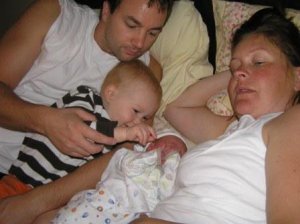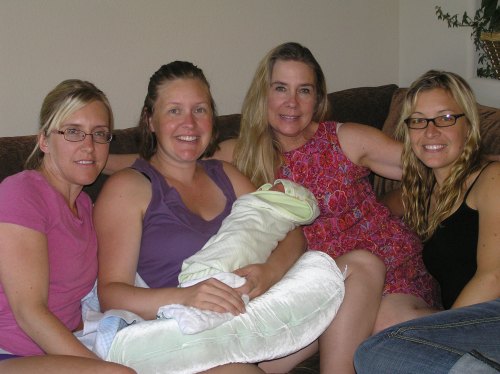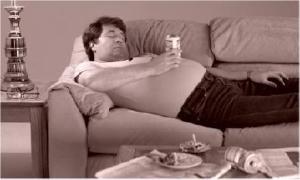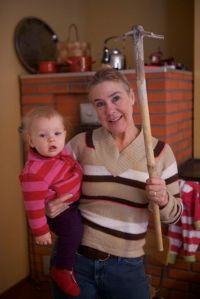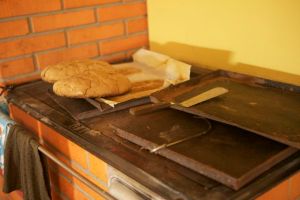Today, our fathers are more important than ever! We are grateful they are taking on these new roles in caregiving, providing our children with an awesome opportunity for the first time in American history! Yet, with these economic driven changes taking place, there are also some current considerations.
In my profession, I observe diverse family systems, the changes they go through, and the effects these changes have on children. It doesn’t matter whether the children are in the United States, Finland, Mexico, or an other country I have experienced. Children all have the same basic needs and when these needs are not met, they communicate this imbalance to us in a variety of ways. Imbalance expresses itself differently for each child. It may look like withdrawal from the world in one child or acting out in another. It may show up in the form of insomnia in one or stomach aches in another. Because of all of these different “shouts for help” coming from our children, there is one new need that children will be suffering from in the future that we should all be aware of and work towards handling so we don’t see a new form of preventable childhood problems.
My focus has always been on the preventive. It is more cost-effective and harmonious for all concerned to prevent a problem rather than ending up with a host of problems that not only torture all involved, but also become very costly to treat. I urge you to keep this in mind when I communicate the following:
 With the new trend of Stay At Home Dads, largely in part due to our current economic downturn and high rates of unemployment, many Dads are embracing unemployment as a gifted opportunity they never had before. Children are also benefitting from having their fathers more present in their daily lives than any other previous generation in the U.S. (Though many European countries already recognize the importance of Paternal Leave.)
With the new trend of Stay At Home Dads, largely in part due to our current economic downturn and high rates of unemployment, many Dads are embracing unemployment as a gifted opportunity they never had before. Children are also benefitting from having their fathers more present in their daily lives than any other previous generation in the U.S. (Though many European countries already recognize the importance of Paternal Leave.)
As we witness this beautiful evolution in our fathers, which I see on a daily basis, and most personally, with my own son-in-law right now, many fathers are showing themselves as capable caregivers, and in some respects, even better housekeepers than their wives. I say Hallelujah for this! When the mother does not have the burden of working, cooking, shopping, caregiving, and housework entirely on her shoulders, she will be more balanced in her own life, and perhaps even more available emotionally and physically to her husband!
However, just as unplanned suburban sprawl has created numerous unintended consequences to our culture and planet such as isolation, over-consumption of resources and energy, obesity, and addictions, we need to prevent unintended consequences from this current trend in Stay At Home Fathering. We need to have a plan and consider all ramifications before we have a spiraling out-of-control situation that we did not foresee or know how to stop.
There are two specific issues I am bringing up with this post to consider, regarding this modern day phenomenon:
#1. When fathers are not trained as caregivers from birth as mothers are from generations of gender stereotyping, experience, and role-modeling, it is important they have had good role modeling, and/or training and support in basic healthy practices and effective child rearing methods in order to prevent the further deterioration of our children’s nutritional, emotional, and cognitive states, especially in the U.S. Granted, our children have a host of problem these days, regardless of who their caregivers have been. However, since most fathers are not known for their focus on nutrition and vegetable consumption, we have the potential of a back slide from the current consciousness we need in this country to get our children back on track with the health, academic, and social skills they need for success in life. We need fathers to adopt and support a set of nutritional standards for their children so their daily care is actually strengthening our  children’s physical health and immune systems. How about: No foods purchased with sugar and high fructose corn syrup to start with. (Though nothing can replace the fun and satisfaction of a once in a while batch of homemade cookies.) How about focusing on more vegetables in meals. We all know that a large percentage of men, husbands, are not so keen on vegetables. In fact, it is usually a major issue of contention in many families and has affected the family’s nutritional state for generations. So, what will the effect be if our fathers today are the primary caregivers and meal makers, if they lower the vegetable intake of our households when we should be increasing this intake for our overall health.
children’s physical health and immune systems. How about: No foods purchased with sugar and high fructose corn syrup to start with. (Though nothing can replace the fun and satisfaction of a once in a while batch of homemade cookies.) How about focusing on more vegetables in meals. We all know that a large percentage of men, husbands, are not so keen on vegetables. In fact, it is usually a major issue of contention in many families and has affected the family’s nutritional state for generations. So, what will the effect be if our fathers today are the primary caregivers and meal makers, if they lower the vegetable intake of our households when we should be increasing this intake for our overall health.
Of course, there are many Dads who are doing a great job providing the best for their children, but aren’t they the minority? Prove me wrong please, and then I won’t take issue with this point. What I am saying is that if a father is now responsible for the nutritional standards and meals of a household, shouldn’t they be trained and committed to ensuring their children are getting their nutritional needs met? This is yet another case for a return to required Home Economics for all students in the U.S.!
The other consideration of point #1 is boundaries, limits, respect, emotional maturity, and physical exercise (instead of TV, movies, the internet, or video games). I know I am being very general about many things in this post and there are exceptions to every one of my points, but as a rule, we need to look at the majority of households, which will have the largest future impact to society, regardless of exceptions. When a father is caring for his own children all of the above considerations now become his responsibility to provide, along with the other daily needs of his children and household. To do it right, to ensure children have the best chance at success and happiness in life, all caregivers must be more, not less conscious of these aspects of caregiving. Now is the time for all parents in America to step up; we cannot afford to push back the issues of our children’s physical, emotional, and cognitive health because life has thrown us changes!
Fathers bring many assets to provide our children with these needs. From my experiences, I have seen many fathers actually provide more hands-on opportunities and be more adamant about getting outdoor exercise than some mothers, which I personally believe comes from some genetic intuitiveness. The firmness (not cruelty) that some fathers bring to the table is probably a good thing for most of our children because they need a better foundation of respect for others and more limits to foster their emotional maturity. In this respect and numerous others, children need and benefit from more of their father’s influences, especially if it is firm, loving and infused with clear limits and consequences.
However, when some (not all) current popular father bloggers seek and succeed at high ratings from their witty, clever posts that boast poor parenting practices (Messed-Up Parenting Tips), we see the influences of popular internet culture becoming convoluted and potentially harmful to the future of our children and the idea of Stay At Home Dads, unless we have louder voices of common sense and consciousness prevailing, like the great father blogs like Natural Papa! Of course, I like my own Granny Pants’ Daily Parenting Tips, which always considers the present and future of the child over popular or market-driven trends.
We are stepping into new territory. Child rearing has not been very successful in the U.S. in the last several decades for a variety of reasons. Marketing pressures have influenced parents to choose convenience over what is best. Our current trend of kids raised on TV, DVD’s and video games has led to a country filled with hyperactive, physically unfit, obese, disrespectful, illiterate, depressed, and often violent children. Fathers who are at home with our children now have a new responsibility to embrace the preventive strategies to combat these challenges.
We cannot  afford to slip back into a nation of sheep, unconsciously allowing our children to self-medicate through TV, computers, movies and video games. We need fathers to take a stand and ensure they are not a part of the problem. We need fathers to disconnect those DVD players in your SUV! They are making our kids grow up illiterate and unable to communicate with their own parents or others! Their creativity is being extinguished because they have no time to listen to their own inner processes and expand their experience. They are constantly plugged into someone else’s creativity, not developing their own. We need all parents to kick them outside, teach them how to build, garden, paint, hike, explore, swim, care for animals, etc….
afford to slip back into a nation of sheep, unconsciously allowing our children to self-medicate through TV, computers, movies and video games. We need fathers to take a stand and ensure they are not a part of the problem. We need fathers to disconnect those DVD players in your SUV! They are making our kids grow up illiterate and unable to communicate with their own parents or others! Their creativity is being extinguished because they have no time to listen to their own inner processes and expand their experience. They are constantly plugged into someone else’s creativity, not developing their own. We need all parents to kick them outside, teach them how to build, garden, paint, hike, explore, swim, care for animals, etc….
And, please teach them respect for others, all life, and compassion!
#2. This next issue is something I have been pondering for a while. I am not really clear about what the solutions are, but I have some ideas, which are worth considering. Many of my approaches throughout the years, though seemingly radical at the time to others, have slowly become what are recognized as valid and proven preventives through numerous studies. I am heartened by knowing that common sense and pragmatism is seeping back into American culture, however slow it may be.
Have you ever had something you never knew you would like and then you had it, like a chocolate milkshake? (This reminds me of the story The Fonz told Richie when he was explaining to him how divorce’s were used to having sex all of the time because they had been married with easy access.)
This is the potential situation our kids will be in when fathers return to work. There are already fathers that have returned to work and already children dealing with this withdrawal feeling. They may not have been used to having Dad around, then they got used to it, then he left again!
So, how do we handle this emotional void for both Father and Child? We do it consciously. We do it by conversing with children about it, by carving out some very focused father/child time together every week, no matter how busy a schedule may get. With Skype, we can ensure regular communication during long absences, like military families and traveling business people have been using. We also do it by watching for the signs that our children are suffering these losses as in the ones I listed at the beginning of the post.
By all means, it is best for parents not to let guilt drive their responses to a child who is missing him/her. Guilt is an unhealthy emotion that can lead to permissiveness, especially in inappropriate situations, where structure and limits are needed. Children pick up on and run with a parent’s guilt if they sense it, which can serve to drive even more symptomatic behavior and create a perspective of victimization. Guilt and blame do not empower a child to deal with a situation. Whether it comes from the absent parent or the parent at home, what children need is adult maturity in these moments.
Honest conversations about changes and feelings are important, expressing that the adults too are missing their children. Working together as a family on healthy responses and solutions teaches a child emotional maturity and resiliency, not victimization. Adults seeking solutions while expressing empathy are what children need to learn to deal with any loss, change or challenge.
Because a new position or career change can take off like a jet plane, leaving everything else behind, it is extremely important we acknowledge this reality while also acknowledging the need to maintain the investment in our children’s emotional security and maturity so we don’t lose the investments these fathers have already made if and when the family decides that the father take on an outside employment position!
Many baby boomer children and beyond look back and wish they could have had their own fathers more present and active in their lives. Today, so many fathers are realizing this awesome opportunity to do just that. Yet, because we have an unprecedented situation, we need to create a realistic and thoughtful plan. We need to go beyond market driven decisions and popular culture that throws fix-it remedies at parents like a pitcher to a batter. Most remedies strike out for the long haul because they are profit driven and do not consider the future of the child.
AND, many Dads already foresee their own heartache at returning to work and have considered the full-time stay at home alternative. We are at a precipice, a defining moment in American family life. Let’s have the conversation on these important and valid points. When I see my whiny grandson missing his father, now that he is gone 3 weeks this last trip after months of being at home, when I remember a former employer and his son who used to act out frequently as a result of his father traveling, after seeing his Dad day after day and traveling with him for months, and when I have witnessed hundreds of fatherless children firsthand with their numerous behavioral and emotional problems, I can see the situation repeating from this completely different situation: The Stay At Home Dad Who Was Here Today & Gone Tomorrow!
It really is all the same when a child is suffering loss. And toys and gifts and food and money thrown at a kid to soften this absence never fill the emotional void. It takes a conscious father to recognize the needs of his children and himself to make up that time by being present, even for 20 minutes a day or during a weekend excursion. Absolute 100% focused time with a child is 100% appreciated by every child!
What I am saying to all of the fathers out there is “Please don’t let life take over again, leaving your kids on the sidelines.”
And, for mothers and other caregivers, perhaps more hugs, more Mommy time, some male teachers, nannies, or relatives to fill that male void while Dad is gone, and maybe a little more tussle and outdoor play time is also in order!!!!!
For the Dads who choose to stay at home, please recognize this awesome responsibility and find support for making the best choices for your children! Recognize the powerful marketing influences of pop culture and steer clear for your kids sake as well as for your pocketbook! This 5 minute video is worth pondering: (Consuming Kids)
Do you have any exemplary or despicable Stay At Home Dad stories to entertain us with? Please share them here with other readers in the comment section!
Are you a Stay At Home Dad by choice or necessity? Will choose to stay at home for a while or will you leave for a better paying position? Why do you enjoy staying home with your kids?
Granny Pants
http://TheNewPhysicsofChildhood.com


 Any booze you have lying around is best suited for creating that fabulous meal while gaining rave reviews and clean plates from those you feed!
Any booze you have lying around is best suited for creating that fabulous meal while gaining rave reviews and clean plates from those you feed! 





